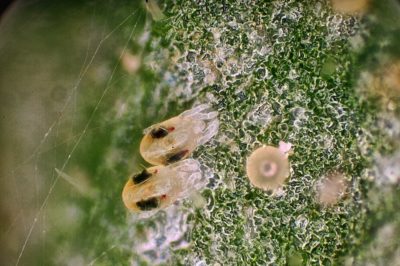Identifying and Preventing Eggplant Loving Pests
Here are the most common eggplant pests and solutions for preventing them from damaging your eggplant crop.
Colorado Potato Beetle
The Colorado potato beetle is about the size of a ladybug with ten black and gold stripes running the length of its body. The smaller larvae are dark in color and without stripes. These eggplant pests eat the leaves of the plant and can quickly devastate an entire crop.
Solutions: Watch your plants carefully for these pests and shake them off into a dish of soapy water as soon as they appear, also checking the underside of leaves for clusters of eggs.
Because Colorado potato beetles overwinter in the soil and do not fly at first, mulching the ground with a thick layer of straw will make it harder for this insect to reach the plants.
Use diatomaceous earth on the soil around the plants. This natural, non-toxic dust kills the larvae of this pest.
Two-Spotted Spider Mite
The two-spotted spider mite is another damaging and common pest of eggplants. These microscopic mites are almost impossible to see with the unaided eye, but they reveal themselves by the damage they do. Look for clusters of webbing on the underside of leaves and small white spots on leaf surfaces. You can also shake the leaves over a piece of white paper and look for miniscule, moving black specks to help identify this pest.
Solutions: Misting the underside of the leaves when watering discourages infestations of two-spot spider mites.
Neem oil can be used for heavy infestations, and a solution of crushed garlic mixed in water can be sprayed on leaves to discourage this eggplant pest.
Eggplant Lace Bugs
Eggplant lace bugs are oblong-shaped, winged insects 3-5mm in length. The wings are lacy and transparent, giving these pests their name. They cluster on the underside of eggplant leaves, sucking photosynthetic fluids from the plants, causing bleaching and discoloration of the leaf surface.
Solutions: Leaves damaged by eggplant lace bugs can be pruned off to encourage new leaf growth. Neem oil can be used if lace bug infestation is server, but the best solution is keeping the plants healthy and vigorous by planting, fertilizing, and watering correctly.
